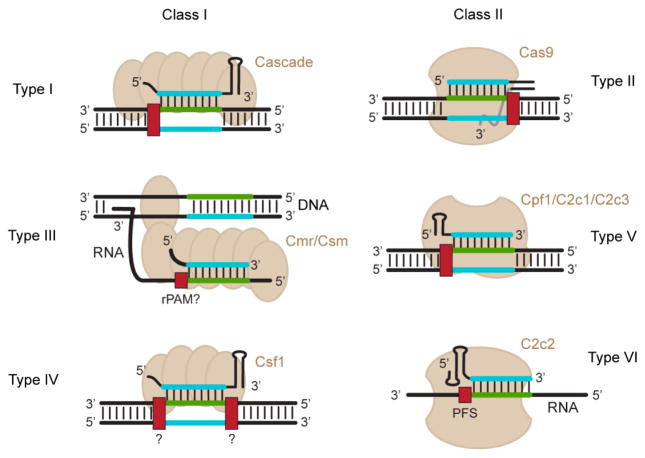Figure 3.
PAM orientation and targets for different types of CRISPR-Cas systems. CRISPR-Cas systems are subdivided into two classes and six types. Representative illustrations of the effector proteins for each type are shown. The dsDNA orientation has been flipped from Figure 2 to accommodate the guide-centric PAM orientation. Note that the effector proteins for the V-B and V-C subtypes require a tracrRNA similar to Type II systems. For Type III and VI systems, the crRNA binds target RNAs. Type III systems cleave transcribed dsDNA due to its proximity to the RNA target [40]. Note that the mechanism by which Type III and VI systems recognize their nucleic-acid targets are still under investigation. PAM orientations are presented for all systems except for Type IV systems, which remain uncharacterized.

